I was in the mood for some kind of fancy burger. I perused my to-try recipe collection, and up popped this recipe, from Food52 for a Japanese style burger (they called it a chopped steak) with an unusual sauce of caramelized onions, tamari, sake, Madras curry powder and ketchup. What a combination, I thought!
If you’ve been reading my blog for awhile, you’ll notice an absence of much of any Japanese influence. I eat sushi once in a blue moon, and only if it’s tuna or a California roll. I spent a couple of months in Japan years ago (1965 to be exact) and I wasn’t particularly enamored with the food. Tempura was good, but even then I knew it was rich and it didn’t appeal to me every day. If there were sushi restaurants in Japan when I was there, I sure never saw them. Probably the thought of eating raw fish made me cringe. Gyoza, however, I love. Fried, of course. I buy the ones at Trader Joe’s now and then and like them. I like my own better – they have more shrimp and pork in them, but oh, gosh, are they a lot of work. The TJ’s ones will do me just fine! I did make sukiyaki at home for some years after my 1965 trip, but even that recipe has disappeared and I haven’t craved it. Today sushi is king.
And, since we know from all the health experts that we shouldn’t OD on salt, I am careful about cooking with or using too much plain salt, or soy sauce, for instance. And with the scare about arsenic in rice, I also limit how much rice I eat.
All that leads up to the fact that this recipe appealed to me recently, tarmari included! As I write this, my best friend Cherrie is in Hawaii in a timeshare they’ve owned for years. She’s with her friend Jackie who also loves Hawaii as much as Cherrie does. Cherrie’s hubby, Bud, is fending for himself at home, so I invited him to come have dinner with me. Right now I have no working outdoor barbecue (an outdoor kitchen is under construction, and I’ll share the photos when it’s done) so it needed to be something cooked on the stovetop or oven. Bud is going to give me some barbecue lessons (you may remember I’ve mentioned here, that I really don’t know how to barbecue – Dave always – always did the barbecuing). I do understand the technique, but I need guidance about the brand of barbecue I have. Bud and Cherrie own the same brand (gas). I don’t know whether I mentioned it a week or so ago, but recently my cousin Gary flew down to visit me (stories on that soon) and his 2nd night here I defrosted a prime steak and I DID barbecue it. It took longer than I’d thought it would, but I think the fire wasn’t quite as hot as Dave would have used. But it worked perfectly, and the steak was done just the way I liked it – seared and charred on the outside – and at a perfect 125-128° temp on the inside, solidly pink with no gray anywhere. I was quite proud of myself. Back-patting here, okay????
A trip to the market ensued because I didn’t have the right combo of ground meats (half ground chuck, half ground sirloin), tamari, sake, and enough onions to make the caramelized ones needed for the burgers and the sauce. One thing I wondered about was what’s the difference between soy sauce and tamari. Well, not much, but tamari is generally less salty (good) and it’s also a thicker sauce than soy sauce (good in this instance since it was in a sauce). I also didn’t have sake on hand.
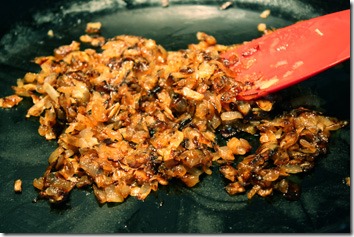 One thing you need to know about this dinner, if you haven’t made caramelized onions lately, is that it takes a long, LONG time to caramelize onions. And you’d be amazed at how much you start out with (2 1/2 cups) and what you end up with (about 2/3 cup). I forget how long it takes (at least 45 minutes) – good thing I started working on dinner at about 4:00. I took the photo before the onions were fully caramelized. I figured you’d not be able to even see them against that black nonstick pan if I took the photo later, when they were nearly the color of mahogany.
One thing you need to know about this dinner, if you haven’t made caramelized onions lately, is that it takes a long, LONG time to caramelize onions. And you’d be amazed at how much you start out with (2 1/2 cups) and what you end up with (about 2/3 cup). I forget how long it takes (at least 45 minutes) – good thing I started working on dinner at about 4:00. I took the photo before the onions were fully caramelized. I figured you’d not be able to even see them against that black nonstick pan if I took the photo later, when they were nearly the color of mahogany.
I made Marinated Tomatoes to go with it, and some nice steamed broccoli. (The recipe indicated sliced tomatoes, broccoli and rice are standard sides with this burger.) Our markets are just now starting to get good tasting tomatoes, so I used Kumato again, because I really like their flavor. And I made an ancient recipe of mine for a French-style poppy seed egg noodle dish which I’ll post in a few days. I didn’t serve rice, as any self-respecting Japanese person would eat with this.
The gist of the recipe is as follows: you cook up a ton of onions (chopped) until they’re caramelized a dark brown but not burned. You mix up the ground meat, eggs, seasonings, some bread crumbs soaked in milk (which gave these burgers perfect texture, IMHO). Most of the caramelized onions are added to the burgers (reserving the remaining for the sauce) and you gently shape them into 6 thick burgers. I pressed an indent in the middle which worked like a charm for a more evenly flat shaped finished burger. I refrigerated the burgers on waxed paper at that point. Meanwhile I set up all the things to go into the sauce – easy. I made the noodle dish and that went into the toaster oven for 25 minutes. I’d already made the tomatoes and they were chilling in the refrigerator. I prepped the broccoli in my cute little Lekue steam case, drizzled lightly with oil. The burgers are sautéed in butter (not much) – seared to get a nice dark crust on one side, turned over to do the same on the other side. I used my instant-read thermometer to test the meat – I wanted it to be 130°, or even a bit under. The burgers were removed to a hot plate in a low oven while I mixed up the sauce. To the pan I’d fixed the burgers in I added the flour and curry powder and let that sizzle just a bit, then added the reserved onions, tamari, ketchup, sake (with sugar dissolved) and finally water. That just cooked slowly for a few minutes. I added a tetch of water (about 2 T) because it got thick quickly. That’s it. Burgers were plated and the sauce spooned over the top. Garnish with parsley if desired.
What’s GOOD: the flavor of the burger was stupendous. It was just tender, just cooked through, just perfect. The sauce was a bit salty tasted on its own (so be careful not to add too much salt to the burgers themselves, but they do need a little bit), but with a bite of the burger it was great. Altogether fabulous dish. It would be worthy of a company meal for sure. Not difficult for a weeknight meal except for the caramelizing of the onions.
What’s NOT: regarding flavor, nothing. Just know you have to stir and cook those darned onions for a long, long time.
Files: MasterCook 5+ and MasterCook 14 (click link to open recipe in MC)
* Exported from MasterCook *
Japanese Burgers with Caramelized Onion Curry Gravy
Recipe By: Food 52, 2013
Serving Size: 6
1 tablespoon olive oil
4 tablespoons unsalted butter — divided into 4 tablespoons
2 1/2 cups yellow onions — small dice
1/4 cup whole milk
1/2 cup bread crumbs — gluten-free or otherwise
1 pound ground chuck
1 pound ground sirloin
1 teaspoon kosher salt
Freshly ground black pepper to taste
2 eggs
2 tablespoons flour — or 3 tablespoons brown rice flour
1 tablespoon Madras curry powder
1 1/2 cup water — (1 1/2 to 2)
2 tablespoons ketchup
2 tablespoons sake
1 teaspoon sugar — dissolved in the sake
2 tablespoons tamari soy sauce — (2 to 3)
Parsley for garnish
1. In a large sauté pan, heat the oil with 1 tablespoon of butter. When the butter has melted, add the onions and caramelize them slowly over medium heat. This takes a LONG time. Be patient and stir often.
2. While the onions are gently sizzling away combine the milk and bread crumbs in a large mixing bowl. All your ground meat will go into this bowl, so make sure it is large. Let the bread crumbs absorb the milk.
3. Add the ground meats to the bowl along with a teaspoon of salt, black pepper to taste, and the eggs. Mix it well, making sure to really work everything together so you get a nice blend.You don’t want any streaks of the bread crumb/milk mixture, or egg white.
4. Once the onions are French onion soup brown, remove them from the pan to a plate. You can re-use the pan – remove any burned bits. Let the onions cool a minute, then add 3/4 of the onions to the steak mix and knead them in. Form six 6-ounce patties. If time permits, place the burgers on a waxed paper lined sheet and refrigerate for 1 hour (makes them easier to handle).
4. Place the pan back onto the heat and turn it to medium high. Add the remaining butter and let it melt and bubble, but not burn. If it begins to burn, turn the heat down. Once the bubbles begin to subside, add the burgers (if your sauté pan isn’t big enough, do this in batches.) Brown them on both sides, cook them to about 130°F (use an instant read thermometer with the probe into the center of each burger) or to your desired temperature and then gently remove them to a warmed plate and keep them in a low oven while you make the pan gravy.
5. If your butter is burned, clean pan and start over. There should be a bit of butter left in the pan (if not, add just a little bit). Add the remaining onions and the flour and let them cook for a minute or two while you are stirring it around. Add the curry powder, stir once or twice to break out the spice flavors, and then add the water, ketchup, sake, and tamari, stirring the entire time until the sauce comes to a boil and thickens. Make sure to use your wooden spoon to scrape up all the goodies from the bottom of the pan. Taste and adjust the seasoning (don’t add salt). If it is too thick, add water a 1/4 cup at a time, stirring between additions. Taste and adjust the seasonings if needed.
6. Place the burgers on individual plates and pour the sauce over the top. If desired, serve with steamed white rice and vegetables (traditionally broccoli, potatoes, and sliced tomatoes).
Per Serving: 581 Calories; 41g Fat (64.6% calories from fat); 33g Protein; 18g Carbohydrate; 2g Dietary Fiber; 202mg Cholesterol; 921mg Sodium.





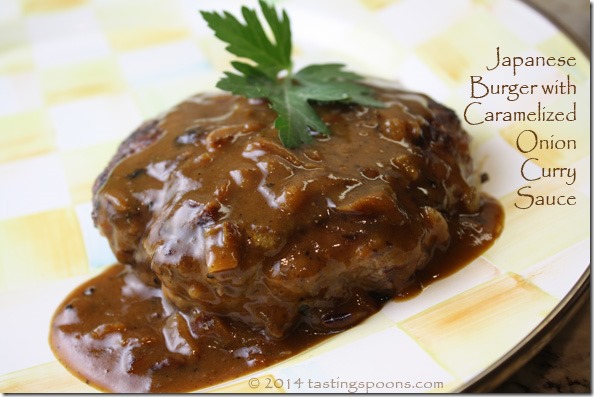


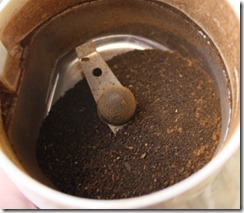
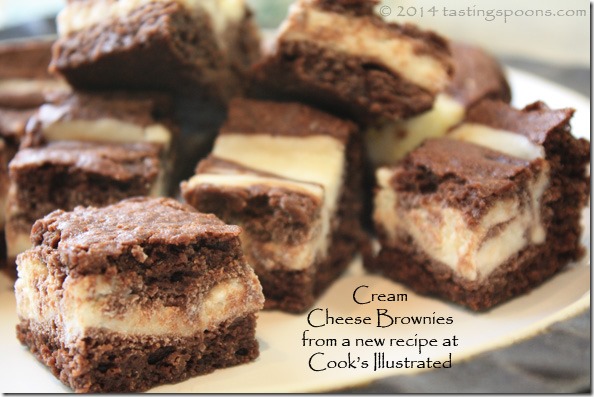
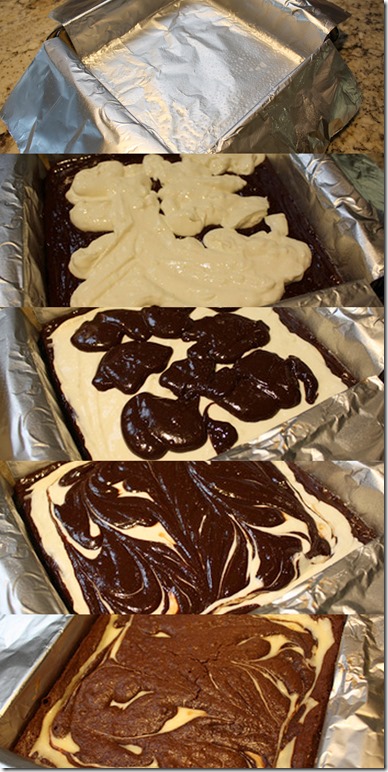
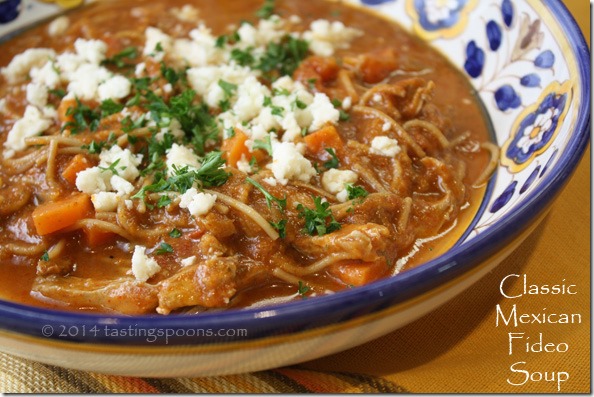
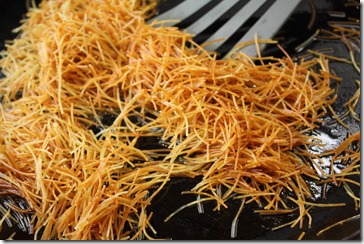
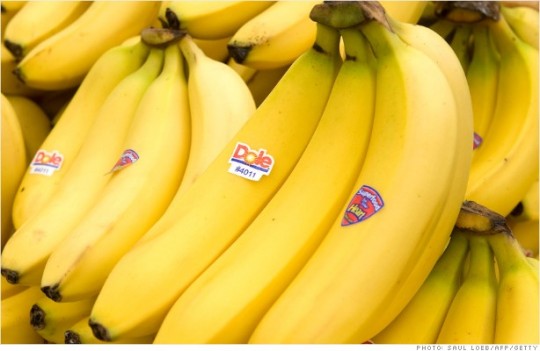
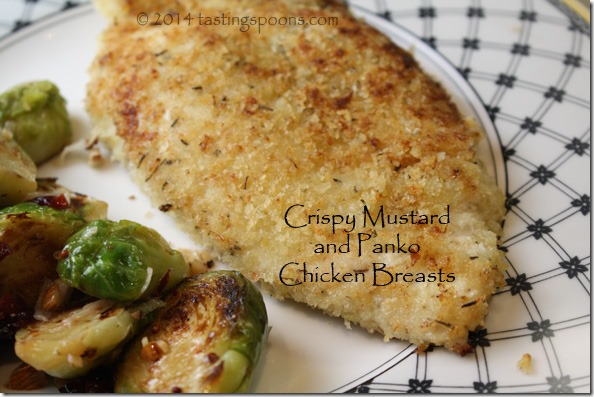
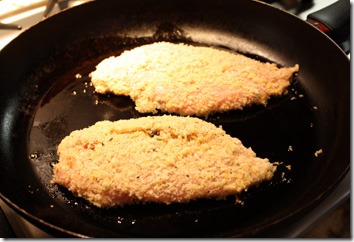
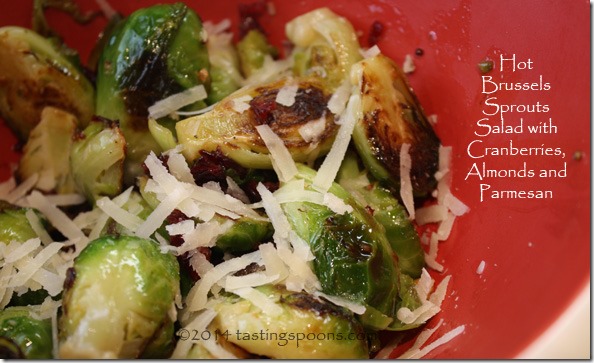
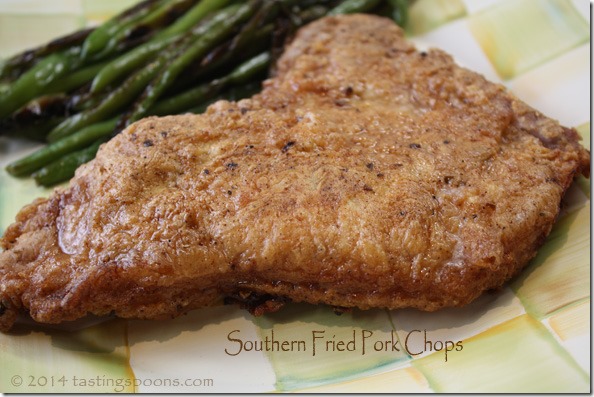

Leave a Comment!